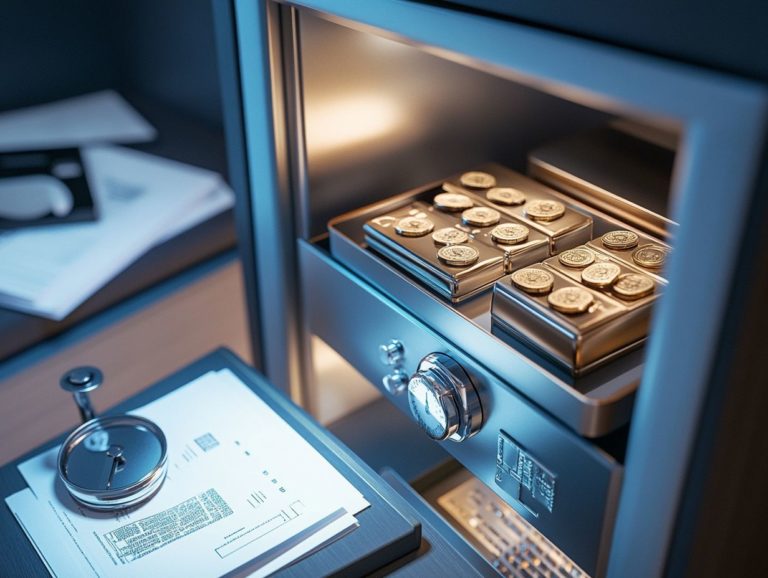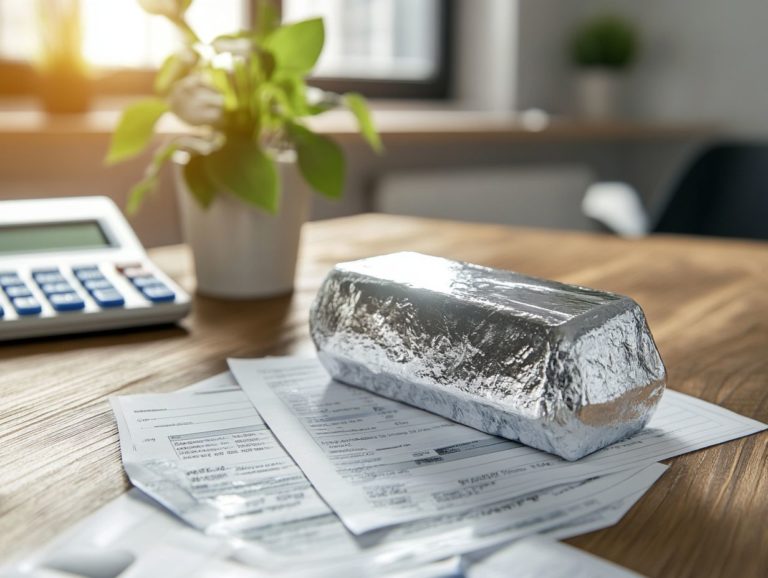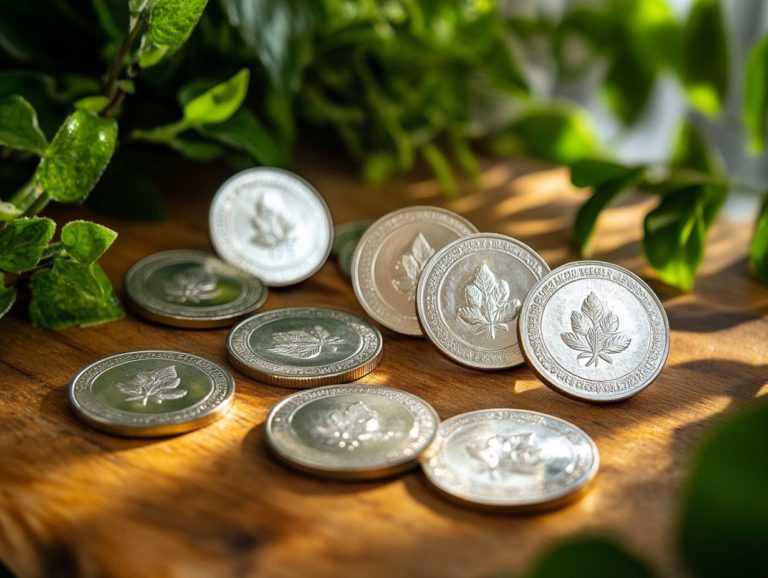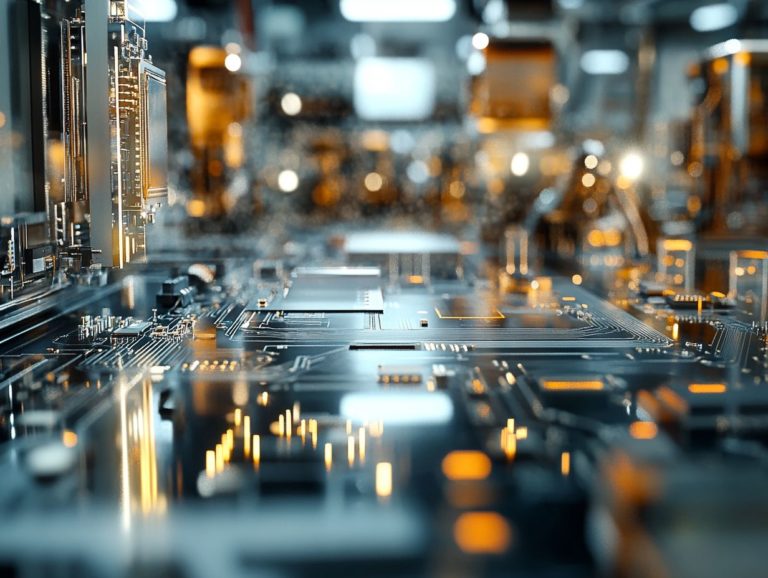Palladium Prices: What Drives Their Fluctuation?
Palladium, a precious metal that often takes a backseat to gold and silver, plays an essential role in vital industries such as automotive manufacturing and electronics. Understanding the forces at play behind its price fluctuations is crucial whether you re an investor or simply an enthusiast.
Dive into the fascinating world of palladium and discover its secrets! This article covers everything from its definition and the factors that influence its market value to the intricate supply and demand dynamics at work. You’ll also find insights on potential investment opportunities and risks, along with expert predictions on future pricing trends.
Uncover what drives palladium prices and learn how to navigate this intriguing market with confidence.
Contents
- Key Takeaways:
- Understanding Palladium Prices
- Supply and Demand Dynamics
- Investing in Palladium
- Forecasting Future Palladium Prices
- Frequently Asked Questions
- What are palladium prices and how do they fluctuate?
- What is the main driver of palladium prices?
- How does the global economy affect palladium prices?
- What impact do geopolitical events have on palladium prices?
- Are there any other industries besides the automotive sector that affect palladium prices?
- How can investors track palladium prices?
Key Takeaways:
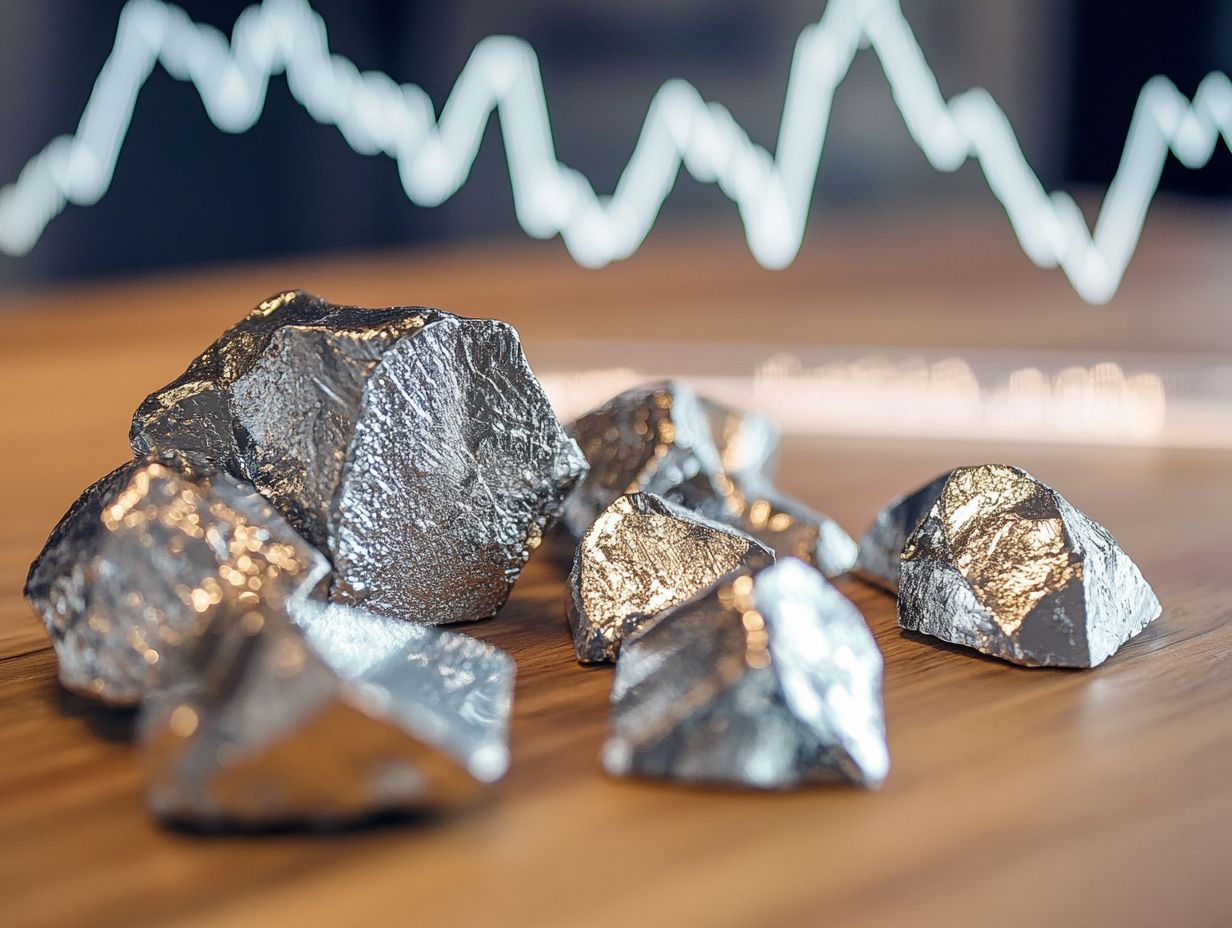
- Discover how supply, demand, and industry trends drive palladium prices!
- Investing in palladium can offer both opportunities and risks. Stay informed on market trends and expert predictions when making your investment decisions.
- Forecasting future palladium prices involves analyzing expert predictions and market trends, as well as monitoring supply and demand dynamics.
Understanding Palladium Prices
Understanding palladium prices is vital for you, whether you’re an investor, manufacturer, or consumer. Palladium plays a significant role across various industries, especially in the automotive sector, where it s essential for producing catalytic converters devices that reduce harmful emissions from vehicles.
The dynamics of its price are shaped by a multitude of factors, including supply and demand, geopolitical tensions, recycling rates, and investment trends, making it quite an unstable investment in the precious metals market.
As global economies shift, so do palladium prices, influenced by everything from mining output in Russia and South Africa to technological advancements in catalytic converter technology.
What is Palladium?
Palladium is a rare, precious metal that belongs to the prestigious platinum group. It s primarily utilized in a variety of industrial applications, including automotive manufacturing, jewelry production, and dental restorations. Its excellent biocompatibility and remarkable resistance to corrosion make it particularly valuable.
This highly sought-after metal boasts exceptional catalytic properties, positioning it as a crucial component in catalytic converters that play a vital role in reducing harmful emissions in vehicles. Its malleability and ductility enhance its appeal, especially in the creation of intricate jewelry designs, where it often stands out as a hypoallergenic alternative to traditional gold and silver alloys.
Palladium’s anti-tarnish characteristics add to its desirability for high-end watches and fine jewelry pieces, ensuring they maintain their luster over time. Beyond jewelry and automotive applications, this versatile metal is also instrumental in electronics and hydrogen storage technologies, highlighting its economic significance.
Factors Affecting Palladium Prices
Several factors significantly influence palladium prices, with the primary drivers being the intricate supply and demand dynamics within the palladium market. Fluctuations can arise from geopolitical tensions, shifts in emission regulations, and varying recycling rates impacting the availability of this precious metal.
Supply constraints from mining production are crucial to consider. Key mining locations are often limited and can be affected by environmental policies or labor issues, adding complexity to the situation. This restricted supply becomes significant as the automotive industry increasingly relies on palladium for catalytic converters, while factors such as demand and economic conditions also influence what drives gold prices.
As manufacturers transition toward greener technologies, any alterations in vehicle production or regulatory frameworks can lead to dramatic shifts in demand. The growing awareness of environmental impacts has led to enhanced recycling efforts, which can affect market availability. However, these efforts may not be enough to offset the supply shortages arising from primary mining sources.
Stay updated on market trends and seize opportunities in this dynamic field!
Supply and Demand Dynamics
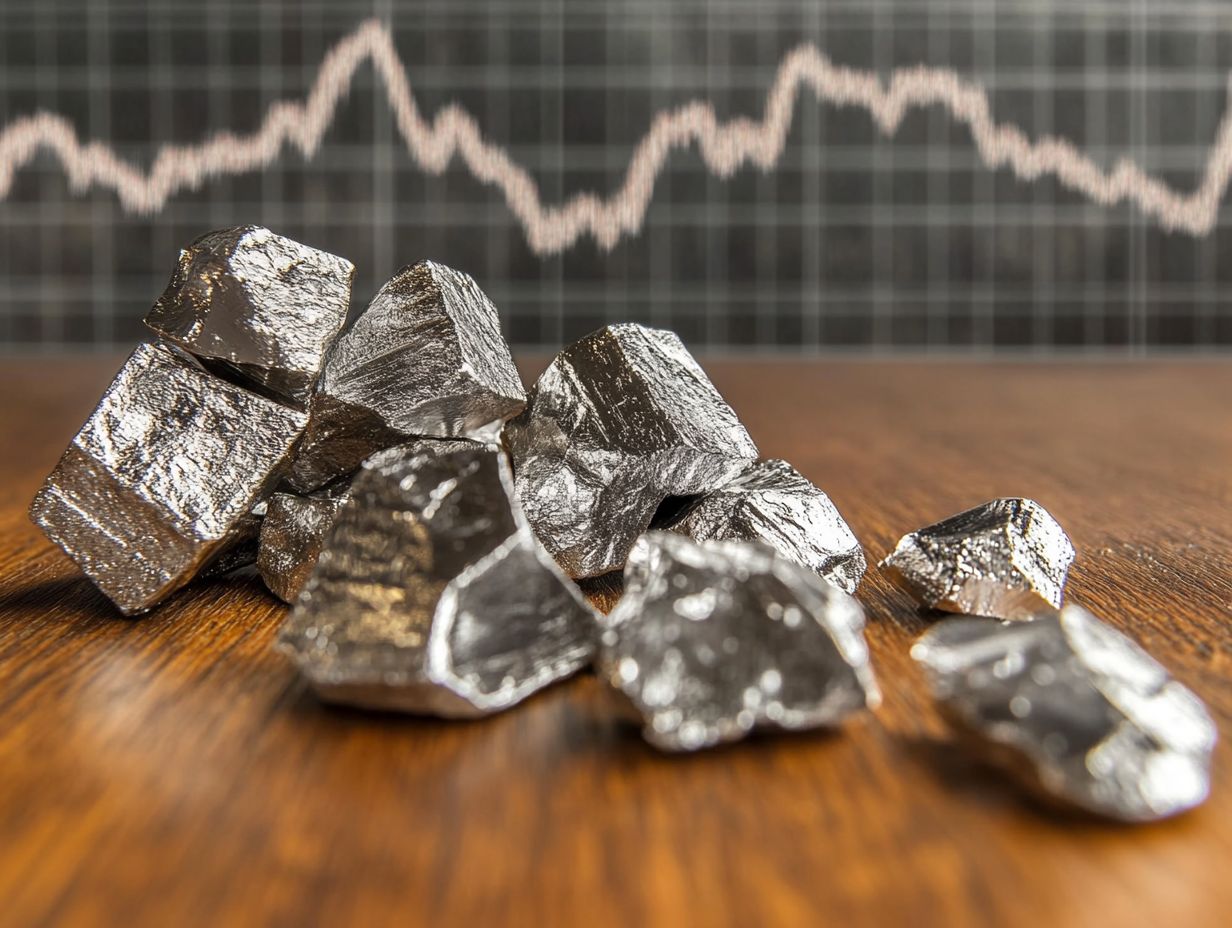
The intricate dynamics of the palladium market are influenced by various factors. Global production and consumption rates, investment trends, and geopolitical events significantly shape this landscape.
Mining activities in key countries like Russia and South Africa, the main suppliers of palladium, are particularly susceptible to these influences. Understanding these elements is essential for grasping the market complexities.
Global Production and Consumption
The global production and consumption of palladium are largely driven by the automotive industry. The soaring demand for catalytic converters has created notable supply constraints in the palladium market.
This has increased recycling rates to meet growing demand. Your reliance on palladium for emissions control fosters a complex relationship between mining outputs and recycled materials.
As electric vehicles become more prevalent, shifts in market dynamics are likely. However, traditional internal combustion engines remain dominant, ensuring sustained high levels of palladium usage.
Fluctuations in automotive production levels prompted by consumer preferences or geopolitical events impact the availability of this precious metal directly. Staying on top of these trends is vital for making smart decisions.
Impact of Industry Trends
The impact of industry trends on palladium prices is significant, especially in the automotive sector. Here, emission regulations and advancements in catalytic converter technology play pivotal roles in shaping the metal’s applications.
As governments globally tighten emission standards to tackle climate change, the automotive industry faces increasing pressure to adopt cleaner technologies. This shift compels automakers to enhance catalytic systems that depend on palladium, directly affecting its demand.
Innovations like electric vehicles and hybrid models introduce both competition and opportunities for palladium use. For you, understanding these emerging trends is essential as an investor or industry leader.
You will need to strategize effectively within this evolving regulatory framework while adapting to technology innovations that shape the future of mobility.
Investing in Palladium
Investing in palladium offers distinctive opportunities and risks. The market volatility, evolving price patterns, and changing investment trends can greatly influence the profitability of your physical palladium assets and other vehicles in the precious metals market.
Opportunities and Risks
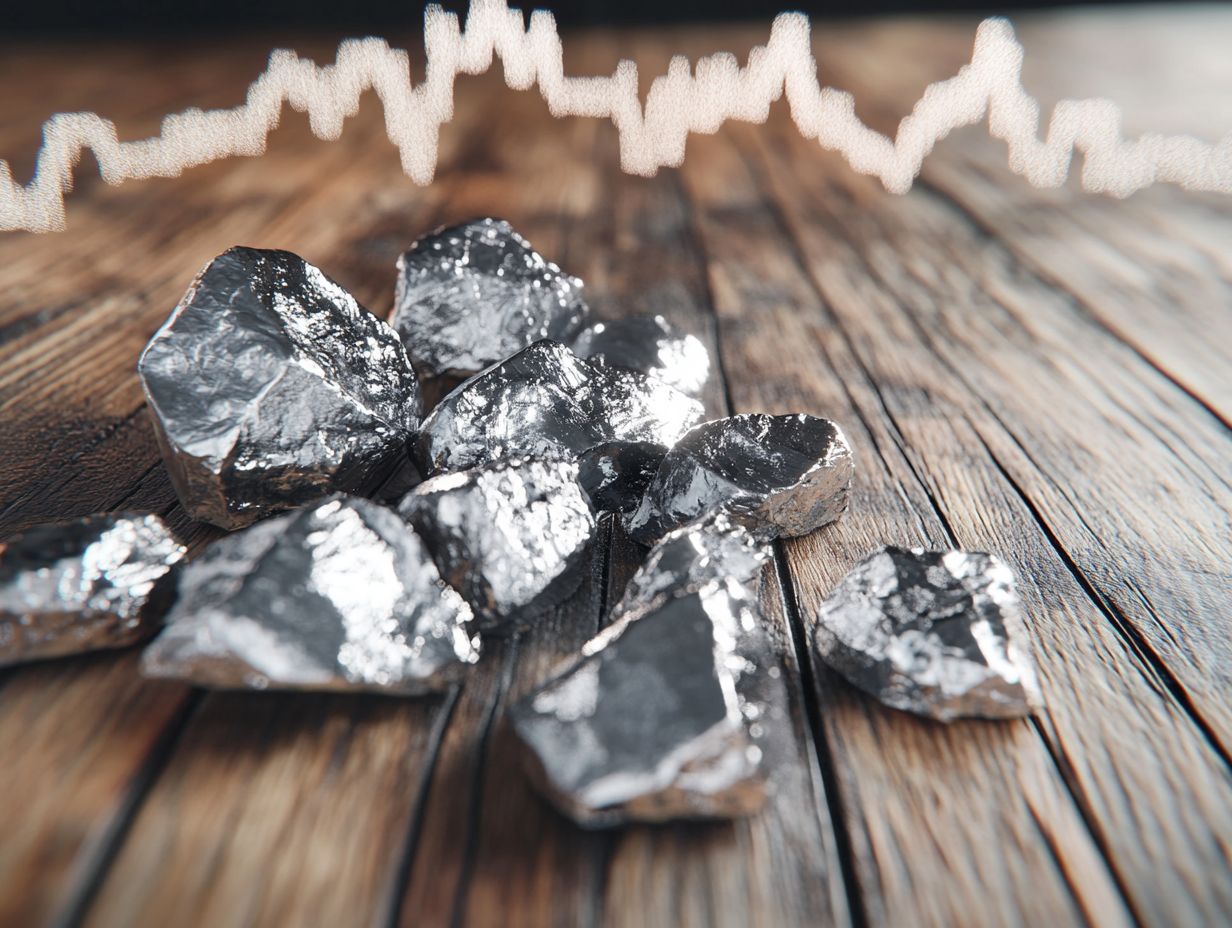
Palladium investment offers exciting opportunities but comes with significant risks that you need to navigate carefully! Price fluctuations, driven by geopolitical tensions and market volatility, present both enticing prospects and formidable challenges.
These dynamics are particularly striking in today s global market, marked by uncertainties such as trade disputes and regional conflicts that often lead to sharp price swings. You may find yourself grappling with the dilemma of when to time your entries and exits.
Premature decisions can mean missing out on gains or facing increased losses. Moreover, regulatory shifts in key producing countries can disrupt supply chains, adding complexity to the landscape.
To navigate this intricate world of palladium, a well-rounded approach is essential. This means conducting careful analysis of both current events and historical trends, allowing you to balance potential rewards with inherent risks.
Forecasting Future Palladium Prices
Forecasting future palladium prices requires a careful study of multiple factors. You ll need to consider expert predictions, conduct thorough market analyses, and assess prevailing economic conditions.
It’s important to evaluate how technological advancements might shift demand, especially in the automotive industry. By looking into these elements, you can gain a clearer understanding of potential price trajectories.
Expert Predictions and Market Analysis
Expert predictions on palladium prices are often rooted in comprehensive market analysis, taking into consideration a multitude of factors such as supply constraints, recycling rates, and political factors that can drastically influence investment demand and price trends within the precious metals market.
Analysts apply a variety of frameworks, including fundamental analysis that scrutinizes economic indicators, alongside technical analysis that focuses on historical price patterns. They employ tools like regression models and moving averages to forecast potential price movements. Sentiment analysis delves into market psychology.
Using these methods, you can gain a nuanced perspective of the palladium market, enabling you to make informed investment decisions. Keeping an eye on global automotive trends especially the demand for devices that reduce harmful emissions from vehicles can provide further insights into the volatility of palladium prices.
Frequently Asked Questions
What are palladium prices and how do they fluctuate?
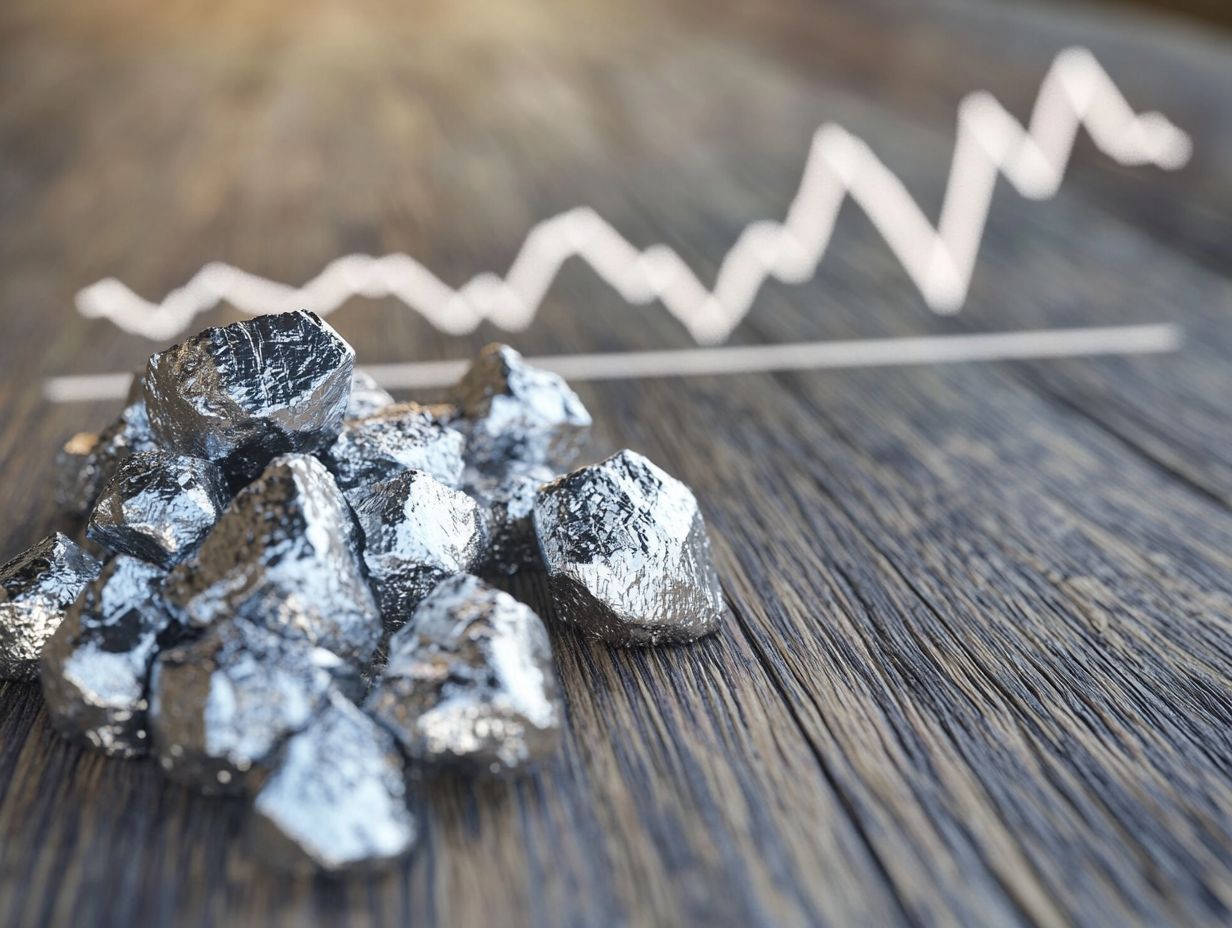
Palladium prices refer to the current market value of the precious metal palladium, primarily used in catalytic converters in automobiles. These prices can fluctuate due to a variety of factors, such as supply and demand, economic conditions, and geopolitical events.
What is the main driver of palladium prices?
The main driver of palladium prices is its demand in the automotive industry. As stricter emissions regulations are implemented globally, the demand for palladium in catalytic converters increases, leading to higher prices.
How does the global economy affect palladium prices?
The global economy plays a significant role in the fluctuation of palladium prices. When the economy is doing well, car sales and production increase, which boosts the demand for palladium and drives its prices higher. Conversely, during economic downturns, the demand for palladium decreases, causing its prices to drop.
What impact do geopolitical events have on palladium prices?
Geopolitical events, such as trade disputes or political instability in major palladium-producing countries like Russia and South Africa, can greatly impact palladium prices. Any disruptions in supply can lead to shortages and drive prices up.
Are there any other industries besides the automotive sector that affect palladium prices?
Yes, aside from the automotive industry, the electronics and jewelry industries also use palladium, albeit in smaller quantities. As these industries grow, there is an increase in demand for palladium, which can drive prices up.
How can investors track palladium prices?
Investors can track palladium prices through various sources, such as financial news websites, precious metal market websites, and by following the stock prices of companies that produce or use palladium. Additionally, there are exchange-traded funds (ETFs) that specifically track palladium prices.
Want to learn more about investing in palladium? Stay tuned for our next article!










